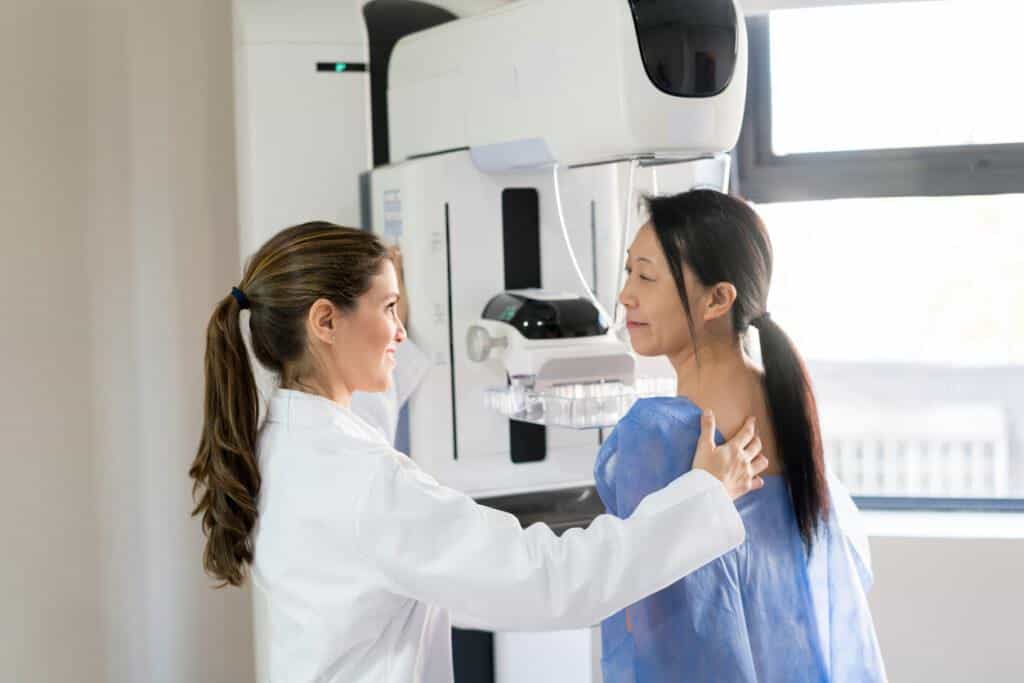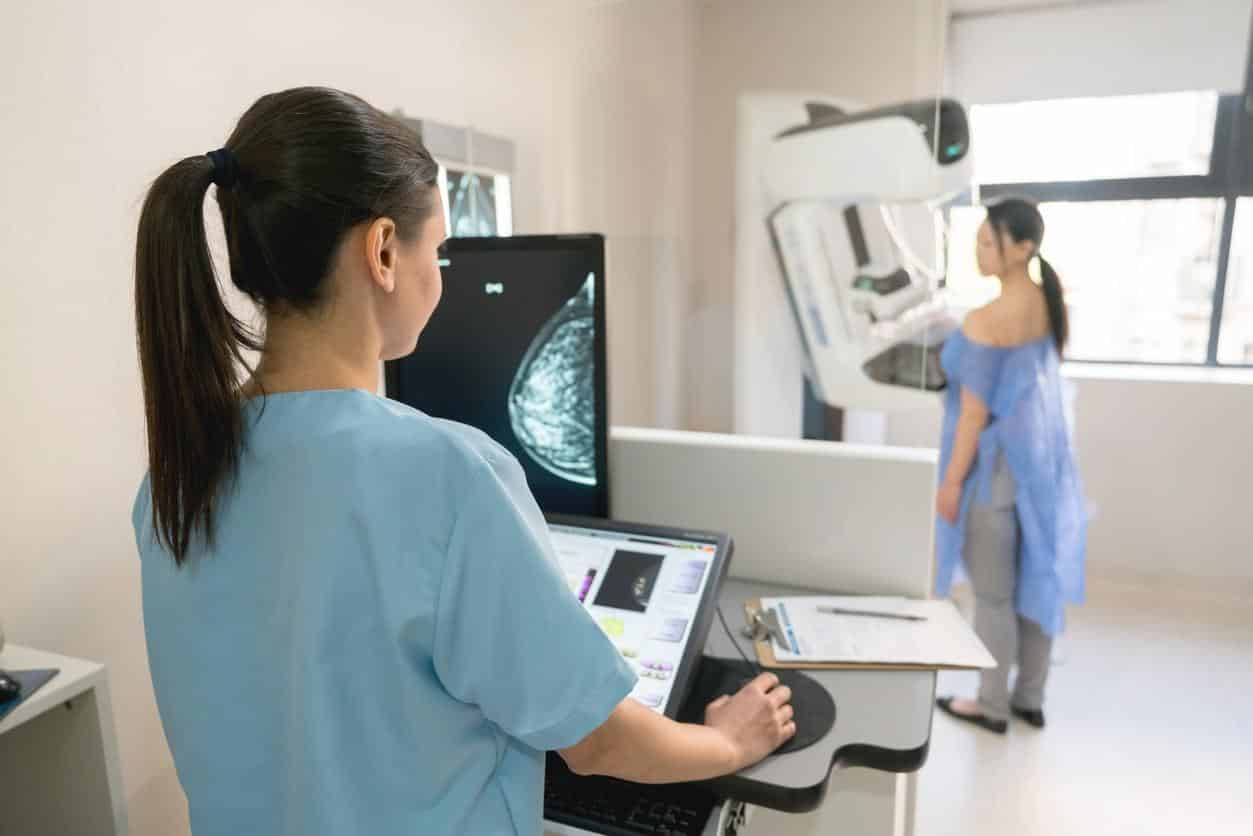Breast cancer is a type of cancer that forms in the cells of the breast. It typically forms in the lobules or the ducts of the affected breast but can also occur in the fibrous connective tissue. While breast cancer is a very common cancer in the US, substantial research and support for breast cancer awareness have seen cases reduce significantly over the years.
Certainly, it is crucial to be on the lookout for the most common signs and symptoms of breast cancer to ensure a developing tumor is detected early enough. Make sure to see a doctor in case you have one of the following symptoms;
– A breast lump that feels different from surrounding tissue
– A nipple discharge other than breast milk
– Peeling, scaling, or flaking of the skin on the nipple or breast
– Unexplained and sudden change in the size of the nipple
– A lump or swelling under the arm
Types of breast cancers
The different types of breast cancers are divided into two main categories; invasive and noninvasive. Invasive breast cancer spreads from the breast ducts to other parts of the breast, while the noninvasive type does not spread from the original tissue.
Here you will learn about the various types of invasive and noninvasive breast cancers as well as the three common subtypes;
Noninvasive breast cancers
Also referred to as pre-cancers or carcinoma in situ, noninvasive breast cancers develop within the milk ducts or lobules in the breast. They include;
Ductal carcinoma in situ
Ductal carcinoma in situ (DCIS) is the most common type of noninvasive breast cancer, and it originates from milk ducts. Moreover, it is noninvasive because it has not spread to surrounding tissue. While it is not a life-threatening type of breast cancer, it increases the risk of developing invasive breast cancer, and therefore important to have it diagnosed and treated early.
Lobular carcinoma in situ
This type of noninvasive breast cancer grows in the lobules (the milk-producing glands), and like ductal carcinoma in situ, it is noninvasive because it has not spread to surrounding breast tissue. It is also not life-threatening but can increase the risk of developing an invasive form. Having it checked can prevent the development of an invasive form of breast cancer in the future.
Invasive breast cancers
Breast cancer becomes invasive when it has spread from the ducts or lobules and has affected surrounding breast tissue. Here are the various types of invasive breast cancers:
Invasive ductal carcinoma
Invasive ductal carcinoma (IDC) is the most common type of invasive breast cancer, with 80 percent of breast cancers being IDC. Essentially, IDC means cancer that originated from the milk ducts has spread into surrounding breast tissue. It has the potential to spread to the lymph nodes and other body parts if not addressed in its early stages.
Invasive lobular carcinoma
This is the second most common type of invasive breast cancer after IDC. Here, cancer that began in the milk-producing lobules has spread and affected surrounding tissue. Over time, invasive lobular carcinoma can spread to the lymph nodes and later to other body parts. Getting tested early in its development can help prevent other body parts from being infected.
Paget’s disease of the nipple
This is a rare form of invasive breast cancer where cancer cells grow in the nipple or the areola. It is characterized by a scaly, red, and itchy nipple and often signals the presence of another form of invasive breast cancer in another area of the breast. These unusual changes in the nipple are often the very first signs of a developing cancer.
Inflammatory breast cancer
This rare but aggressive type of invasive breast cancer (which makes up 1-5 percent of breast cancers) tends to affect the blood vessels in the skin and lymphatic vessels of the breast. Prominent symptoms of inflammatory breast cancer include swelling of the breast, the reddening and inflammation of the breast, and the thickening or dimpling of the breast skin. In some cases, you might not feel the lump, so make a point of seeing a doctor in case you experience any of these symptoms.
Locally advanced breast cancer
Locally advanced breast cancer is a type of invasive cancer that has spread beyond the breast to other body parts such as the skin, chest walls, and muscle. It may also spread to local lymph node, and its common symptoms are a tumor larger than five centimeters and cancer cells that have spread to surrounding body parts and the lymph nodes. It accounts for 10-15 percent of patients.
Phyllodes tumors of the breast
Phyllodes tumors of the breast are rare, and while most of them are benign, 10 percent of them are malignant. They tend to grow quickly but do not always spread to tissue outside of the breast. Moreover, they typically develop in the breast’s connective tissue and not in the ducts. Since symptoms can mimic those of other types of cancer, it is recommendable to confirm with your doctor for surety.
Metastatic breast cancer
This cancer is also known as advanced, secondary, or stage 4 breast cancer because it has spread to distant body parts such as the liver, lungs, bones, and brain. It occurs when cancer cells break away from the original breast tumor and travel to other body parts through the lymphatic system. The symptoms of metastatic breast cancer vary depending on the location of the cancer.
Subtypes of breast cancer
The following are the three main subtypes of breast cancer;
Hormone receptor-positive breast cancer
Two-thirds of breast cancers are hormone receptor-positive, which means they need female hormones to grow. For treatment, a physician can recommend hormone-blocking therapy (such as anastrozole and letrozole), which are medications that one takes for up to five years after the completion of other treatments like chemotherapy.
HER2-positive breast cancer
This subtype of cancer tends to have an excess protein known as the human epidermal growth factor receptor, which promotes the growth of cancer cells. HER2 positive breast cancer may be hormone receptor-positive or negative. It is typically treated with the drug Herceptin along with other treatment methods.
Triple negative breast cancer
Triple negative breast cancer does not have the three receptors commonly found in cancer cells (estrogen, progesterone, and HER2). 15 percent of breast cancers are triple negative, and chemotherapy is usually the recommended treatment method.

Reducing the risk of breast cancer
Making healthy lifestyle changes can go a long way in reducing the risks of developing breast cancer. Be sure to;
– Schedule regular screenings with your doctor
– Conduct a self-exam to assess your status
– Exercise regularly
– Maintain healthy weight
– Limit postmenopausal hormone therapy
– Choose a healthy diet
Summary
Being informed about the various types of breast cancers can help keep you vigilant about any changes or developments in your breasts. In case you experience any symptoms, it is recommendable to have your doctor carry out an examination to check for abnormal signs.
At Women’s Imaging Specialists, we provide professional and exceptional services with a focus on the early detection of breast cancer. Click here to schedule your next screening!


